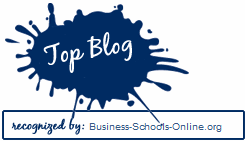Part 1: Who is the ideal listener?
We all know who they are. You may even be one. I’m talking about the ideal listener. These are the people who sit in the front of the room, turn off their cell phone and Blackberry without a reminder, don’t send Tweets, look attentive, take notes, and show interest. They eagerly raise a hand, smile and nod, laugh out loud, lean forward in their seat, ask relevant questions, and defer to your expertise. They may even come up afterwards and thank you personally, shake your hand in earnest, ask you to speak at their next meeting, or even ask for your autograph. This is the audience we all want to be speaking to!
When you look at an ideal audience you see hungry minds hanging on your every word, ready to adopt your suggestion, buy your product, and follow your lead. Now you may be thinking, “Angela, do these model audience members really exist?” Yes, they do! And you’ll have a better chance of seeing a roomful of ideal listeners if you learn how to create them.
A Roomful of Potential Energy
Think of it this way: If you have a roomful of people, you have a roomful of potential energy. Your job is to do whatever you can to nurture that energy to full expression. Think of what it takes to boil a pot of water. If you use just one unit of heat, one calorie, will this make the water boil? I don’t think so. It takes vast amounts of energy to make that water boil, but the potential for it to boil is sitting in that pot even when it’s ice cold.
The same is true for your audience—the potential energy in any audience is always there. And you have the power and influence to get them to the boiling point and to bring them to life!
Because your listeners fully expect you to get them to the boiling point, they will make it easy for you to keep them involved. They will send you “cues”—both subtle and obvious—that you can read. Once you learn to read the cues they send, you will be able to respond effectively and prompt them to stay involved. If you want to succeed with every audience always remember the following: The more you invite your audience into your presentation—the more you read their cues and prompt them to stay engaged—the more comfortable you will feel, and so will they.
Reading Your Audience
So what exactly does it mean to “read” your audience? Reading an audience simply means that you are observing the many details of human behavior that the audience is sending to you at any given moment. It means becoming attuned to the “energy messages” your audience provides—the body language, facial expressions, words, sounds, and silence—that can be your cues to audience interest and engagement.
Developing this ability to recognize and identify specific audience behaviors requires a certain sensory intelligence—and, yes, you can learn it. Learning to observe the details of audience behavior with all your senses will help you more fully understand what the audience needs from you. Use your eyes and ears to listen and observe, but don’t discount the other senses as well. I once had a client who told me that the room smelled fresher when people were highly engaged! “Reading” gives you a chance to understand what an audience is thinking and to what degree they are interested in your topic. Once you have this information you can use it to stimulate the group to become more engaged and involved.
Train Yourself to Observe
Because speaking is primarily one-way communication, reading the audience is one of the few tools that enable us to judge whether we’re on track with our listeners. Without training our eyes and ears to read an audience, we are left with the raw data from our subjective internal self-talk, which is not always a reliable source. Since there is no “dialogue” per se in public speaking, reading people is an important technique that helps us gather some objective data so we can keep the audience involved. So train yourself to take advantage of the information that’s available right there in front of you.
Take some time in the next few days to observe the behavioral cues an audience sends. Make notes of what you see. In my next blog, Part 2, I’ll share a list of some audience behaviors that are easy to read. Let’s compare notes!





December 10th, 2009 at 10:09 am
Angela,
How to Read Your Audience is a Very Powerful article/commentary! ~eResumes4Vips
December 10th, 2009 at 11:10 am
Thanks so much, Andre!